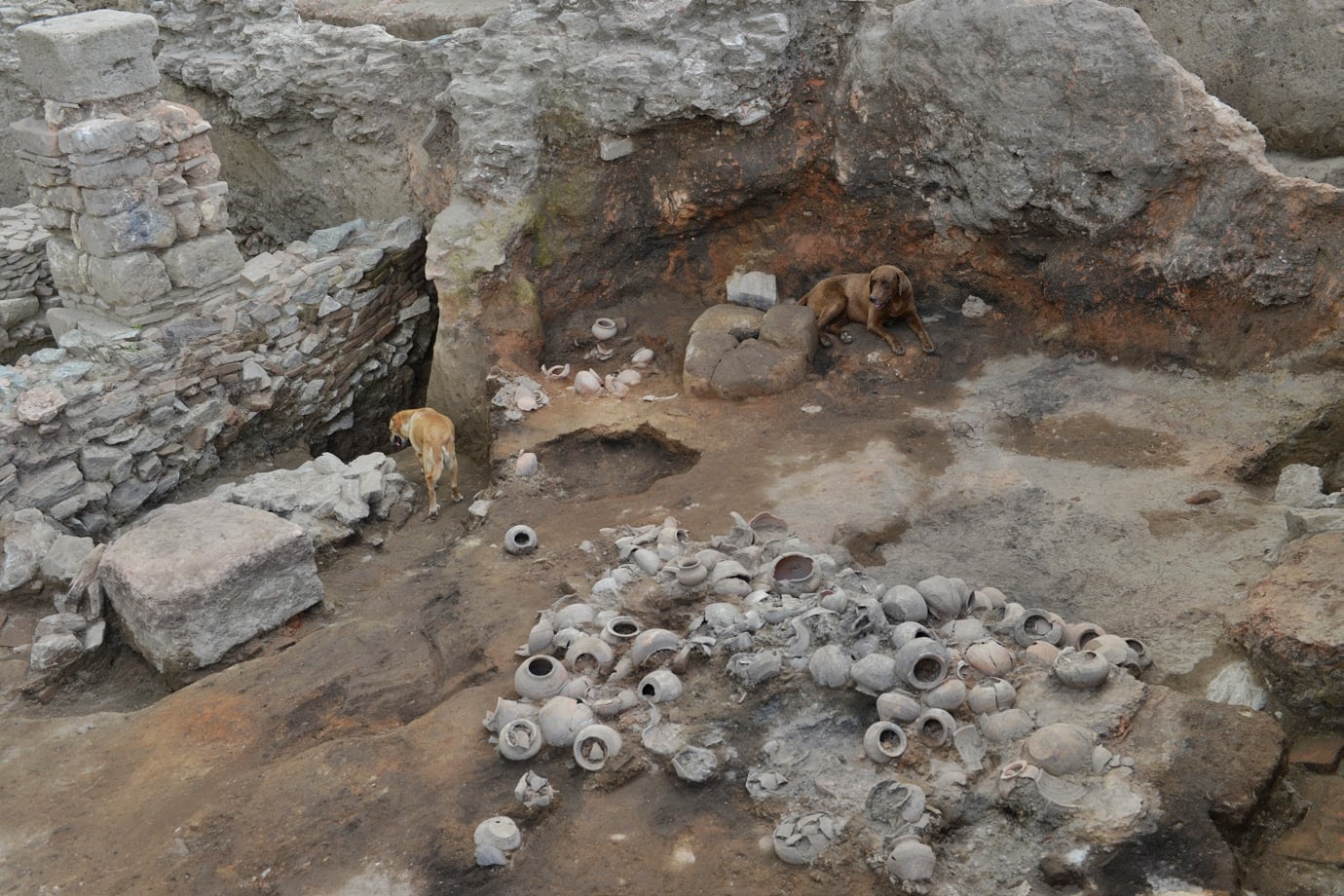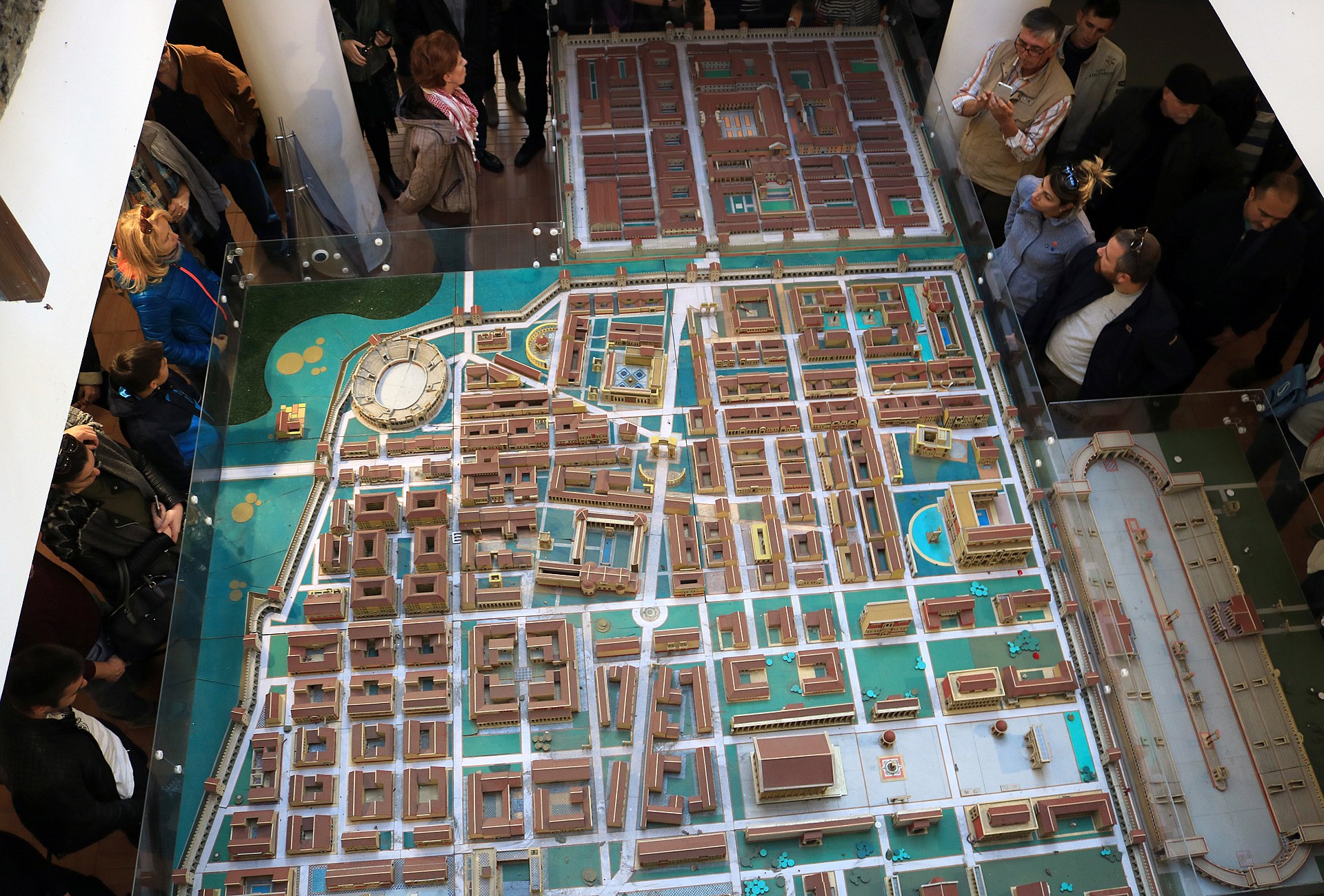Zalejt betonem, postavit rozhlednu a je klid 
More than 300 ceramic vessels from the 4th century found in a Roman camp
Categories: Nálezy nejenom s detektorem kovů ve východní Evropě

The Viminacium deposit in eastern Serbia is huge and rich, and a complete exploration would take more than 300 years. The city was once inhabited by 30,000 people, larger than Pompeii. So far, a considerable number of buildings and structures, statues, coins, jewellery, weapons and everyday objects have been found here. The most recent finds are hundreds of intact ceramic vessels in a building near the western wall of the military camp.
Ancient Viminacium was one of the most important sites of the Roman Empire - it was the capital of the province of Moesia Superior and the base camp of VII. It was the capital of the legion of Claudius, and was located at the crossroads of important roads. It was the assembly point of the Roman army, the starting point of many Roman military campaigns against the barbarians on the other side of the Danube. With a population of around 30,000, Viminacium was larger than the famous Pompeii...
The site today covers an area of 450 hectares, with only 2% of the area uncovered so far. Archaeologists have been studying it for many years and claim that the material here is enough for 300 years of continuous exploration. More than 14,000 graves and tombs with 30,000 interesting and valuable tombstones have been found in the necropolis alone, making it the largest Roman cemetery in the world. Among the many finds here are beautiful jewellery, coins, weapons and tools, pottery, sculptures, reliefs and frescoes, and everyday objects. Remains of an amphitheatre, thermal baths, an aqueduct, many workshops, military and public buildings, temples and basilicas, and many other structures of general use have been uncovered.
The excavation is salvage in nature - the area is in the sights of a coal company, which has stopped at the base of the camp for the time being. So far, several hundred metres of defensive walls have been uncovered, the remains of more than ten towers, two gates, a drainagekopjes, defensive trenches, and several streets and buildings, including the huge building that housed the Legio VII Claudio Pia Fidelis (trans: "Legion loyal and faithful to Claudius").
The vast building was discovered using non-destructive archaeological methods (GPR and magnetometer), and later gradually uncovered and explored under the guidance of archaeologist Nemanja Mrđić. The building has impressive dimensions: seventy meters long and fifty meters wide, with a total floor area of 3,500 m2, hiding up to 40 rooms! It was later confirmed to be the so-called "Principium", the central building of the Roman military camp. It housed the officers, the armoury, the shrine and the treasury, and held the standards, banners and other insignia of the legion.
Archaeologists have found in the part of the building that has been explored so far, among other things. Remains of floor and wall heating, made of hollow ceramic pipes, as well as the remains of a fountain and a water network made of lead pipes. Among the significant discoveries in the building is also a number of Roman coins. There were 118 silver coins, denarii and antoninians, minted by several emperors in the 3rd century - Gallienus, Claudius II (Gothicus) and Aurelianus. Most of the coins lay scattered under the remains of the collapsed roof, suggesting that they may have fallen from a ceramic vessel or leather satchel as their owner hurriedly left the building.
The military camp at Viminacium was founded in the 1st century. Two legions were stationed here - the aforementioned Legio VII. Claudia Pia Fidelis and also Legio IV. Flavia Felix ("Happy Legion of Flavius") after the Dacia invasion. The task of their men was to stop and repel the military attacks of the Dacians. Later, they even pushed the invaders across the Danube and eventually conquered ancient Dacia. It was also thanks to these outbursts that Legio IV Flavia earned the nickname Felix, meaning "lucky". After the Dacia Wars, the Legio Flavio Felix was relocated to ancient Singidun, now Belgrade, to guard the important Via Militaris and the link between the provinces of Moesia Superior (later Dardania) and Pannonia. Its troops were involved in many military actions from Germania to Persia.
Legio VII Claudius remained in Viminacium to control and monitor the Danube basin and the crossings into Dacia. It bore the name "Six times loyal and six times loyal" because its soldiers protected several emperors. This famous legion was founded by Julius Caesar himself in the 1st century BC during the intervention in Gaul and the invasion of Britain. With more than a century of tradition, it was nicknamed the "Old" Legion. Its men fought in the East, in Palestine, Armenia, Syria, Persia and other countries...
Viminacium is an important archaeological site that unfortunately attracts looters of valuable cultural and historical monuments. Most recently, in late September, organised thieves with metal detectors were operating here late at night and were disturbed by a patrol called in. After a frantic chase, they were finally caught. All their equipment was confiscated without compensation and they will face a rigorous trial.
Video with beautiful footage of Viminaccio
Roman Nemec
Sources: archeoserbia, viminacium.org.rs

The article is included in categories:






